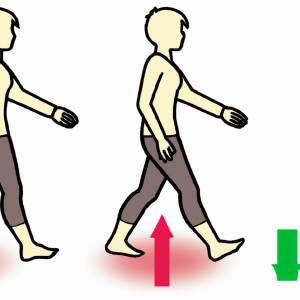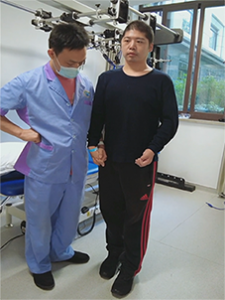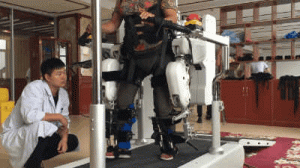Today, let’s talk about normal gait and hemiplegic gait, and discuss how to correct and train hemiplegic gait. Welcome to discuss and learn together.
1.Normal gait
Under the control of the central nervous system, the human body is completed through a series of activities of the pelvis, hips, knees, and ankles, which have certain stability, coordination, periodicity, directionality, and individual differences. When the disease occurs, the normal gait characteristics can be markedly changed.
Gait is learned , therefore, has individual characteristics. There are three processes that must be completed for normal gait: weight support, single-leg swing, and swing-leg stride. Start with one heel hitting the ground until that heel hits the ground again.
2.What is a hemiplegic gait
When walking, the upper limb on the affected side is flexed, the swing disappears, the thigh and calf are straightened, and the foot is thrown outwards in a circular arc shape. When the swinging leg moves forward, the affected leg often turns forward through the outer side, so it is also called circle gait. Common in stroke sequelae.

3.Causes of Hemiplegic Gait
Poor lower limb strength, abnormal lower limb joints, muscle spasms, or contractures, poor movement of the center of gravity, thus affecting walking stability.
4.How to correct the hemiplegic gait training?
(1)Core training
The patient takes the supine position, bends the legs, extends the hips, and lifts the buttocks, and holds for 10-15 seconds. During training, a pillow can be placed between the legs, which is beneficial to improve the control and coordination of the pelvis to the lower limbs.
(2)Relaxation training
Relax your triceps and hamstrings with a fascia gun, DMS, or foam rolling to prevent lower-body spasticity.
(3)Gait training
Prerequisites: Ability to bear weight on one leg, level 2 standing balance, separation movement of lower limbs.
Assistive devices: You can choose suitable assistive devices, such as walking aids, canes, crutches, etc.
Or use gait training robots to speed up the rehabilitation of lower limb functions.
The A3 series of gait training and evaluation system can not only allow patients with poor balance, poor muscle strength, and unable to stand to perform walking training as soon as possible, but also allow patients in the walking training period to obtain the integrity from heel strike to toe off the ground Gait cycle training, which is the repeated repetition of standardized physiological gait patterns. Therefore, it helps to form a normal gait memory and accelerate the rehabilitation of the lower limbs.
Patient in training : Gait Training and Assessment Robotics A3
Rehabilitation knowledge comes from popular science of Chinese Association of Rehabilitation Medicine
Post time: Apr-20-2023






